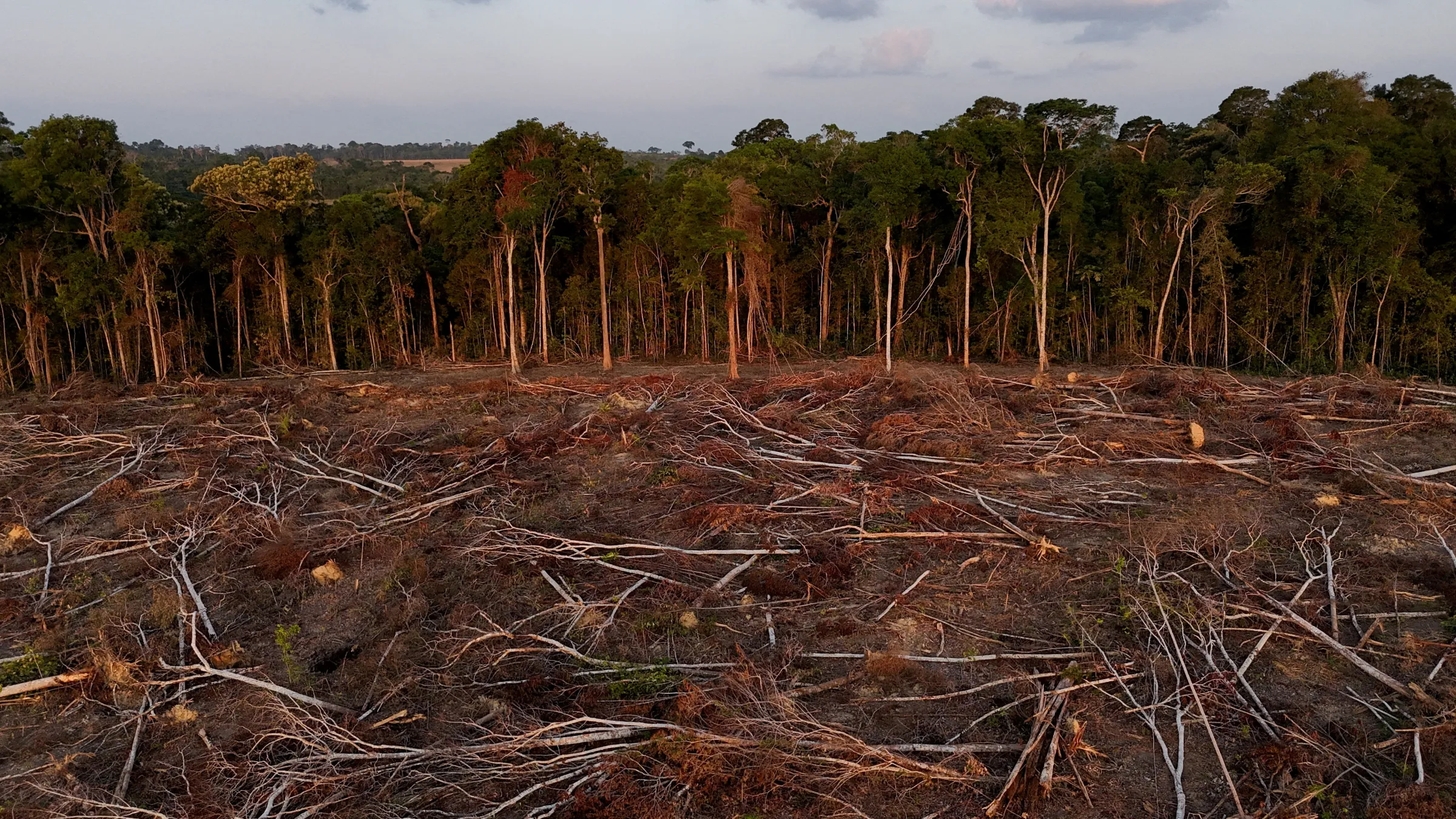Context is powered by the Thomson Reuters Foundation Newsroom.
Our Standards: Thomson Reuters Trust Principles

A drone views shows fallen trees in a secondary forest where farmers were in the last stages of clearing land as soybean farming expanded in the Amazon, in Santarem, Para state, Brazil October 6, 2024. REUTERS/Amanda Perobelli
Swaths of the forest are close to crossing a dangerous threshold, but the Amazon still has the capacity to recover, scientists say.
RIO DE JANEIRO - At this year's COP30 climate summit in Brazil, much of the debate is expected to centre on how to protect tropical rainforests, especially the Amazon - home to the meeting's host city of Belém.
The largest tropical rainforest on Earth faces a pivotal moment. Last year, a drought drove river levels to record lows and fires that contributed to the record loss of tropical forests worldwide, according to research organisation World Resources Institute.
In 2024, the expanse of Amazon forest that burned was double the previous record, based on 40 years of data from mapping consortium MapBiomas.
This has sparked fears the Amazon is moving towards a tipping point, after which it could irreversibly degrade into grassy, more flammable ecosystems.
Rotting and burning trees from the decaying forest would dump massive amounts of carbon into the atmosphere, with the Amazon turning from a carbon sink to a carbon source, accelerating climate change further.
Most of the destruction in the Amazon happens in Brazil's portion of the forest, even though annual deforestation has been more than halved since President Luiz Inácio Lula da Silva took office in 2023, official data shows.
An 2019 editorial by two researchers in the journal Science estimated that deforestation of 20% to 25% would cause "the Amazon system to flip to non-forest ecosystems" in large stretches.
Since the Amazon supplies much of its own water by recycling moisture from the Atlantic Ocean, losing that amount of tree cover would help push the rainforest into an unstoppable spiral.
The dry season would extend in the eastern, southern and central Amazon, turning those areas into savanna-like ecosystems, according to the Science editorial.
Estimates of how near the Amazon is to that threshold vary.
Research published in 2021 in the Environmental Research journal estimated that 13% of the biome's forests have been cleared. MapBiomas put that figure at 15% in August.
More recently, scientists have focused on localised disturbances that could push specific areas to degrade, as opposed to a widespread collapse.
In July, a group of scientists wrote in the Annual Review of Environment and Resources that although "there is no empirical evidence for a single, basin-wide tipping point, critical thresholds are being crossed at regional and local levels."
The journal Nature last year published research estimating that between 10% and 47% of the Amazon may be exposed to levels of climate change and human pressure that could turn those areas into degraded grassy ecosystems as early as 2050.
The loss of tree canopy would allow more sunlight to hit and warm the ground and air.
Most at risk are areas along Brazil's growing network of legal and illegal roads, which form the backbone for logging operations and land speculation linked to livestock pastures and soybean cultivation.
Droughts driven by climate change and decades of deforestation have made the forest more flammable and vulnerable to the fires people set to clear land, a common practice in Brazil.
If arson, logging and deforestation were stopped, the Amazon would still be able to undergo enormous recovery, the Annual Review of Environment and Resources article said.
Brazil's Congress this year passed a bill weakening the environmental licensing process, a move Environment Minister Marina Silva has said disrespects current rules against deforestation.
Lula has vetoed key sections of that bill, but Congress still has the power to override those. A final vote is expected this week.
Environmentalists say that if Lula's vetoes are not maintained, changes could enable large-scale road, railway, mining and drilling projects, pushing the deforestation frontier deeper into the Amazon.
(Reporting byAndre Cabette Fabio; Editing by Jack Graham and Ayla Jean Yackley.)
Context is powered by the Thomson Reuters Foundation Newsroom.
Our Standards: Thomson Reuters Trust Principles